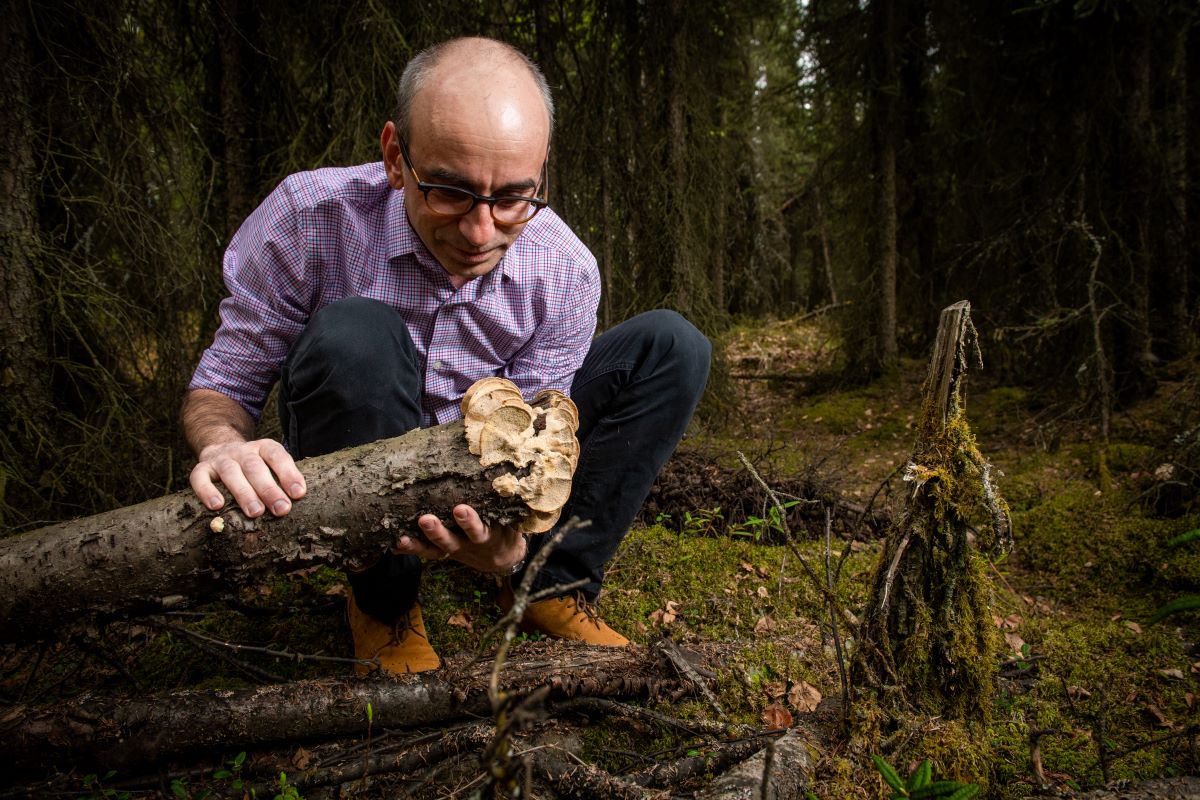Alaskan innovators awarded $2.5M grant to bring fungus-based insulation solution to global communities
by Vicki Nechodomu |

The demand for sustainable and organic insulation solutions continues to grow due
to increasing energy requirements for heating, cooling and powering buildings, as
well as the energy used for manufacturing and shipping construction materials and
temperature-sensitive items. A team of Alaska experts is tackling this issue by developing
a cost-effective, bio-based insulation material that is carbon-negative and produced
from fungus.
“Here in Alaska, we are directly in the path of climate change-related events,” said
Philippe Amstislavski, Ph.D. and professor of public health. “Alaskans are good at tinkering and coming up with innovative, out-of-the-box solutions.
I think it is only fair that we tackle this problem in a way that serves our needs,
as well as the needs of other regions.”
Led by Dr. Amstislavski and Robbin Garber-Slaght at the National Renewable Energy Laboratory's (NREL) Alaska campus, the interdisciplinary team has secured nearly $2.5 million in funding from the U.S. Department of Energy's Advanced Research Projects Agency-Energy for their project, "Celium: Cellulose-Mycelium Composites for Carbon Negative Buildings/Construction."The funding is part of ARPA-E's Harnessing Emissions into Structures Taking Inputs from the Atmosphere program, which addresses barriers to designing and constructing carbon-storing buildings. The Celium Project team aims to develop modular, portable units capable of producing bio-based insulation on-site using local resources such as beetle-kill spruce trees and fungi.
“If the innovation of the 20th century was in chemistry and physics, this century will be the century of biology,” said Dr. Amstislavski. “While the combustion engine, hydrocarbon and nuclear power defined human progress in the last century, synthetic biology will shape our story of survival in the climate emergency in the 21st century.”
Dr. Amstislavski believes the key to solving some of today’s greatest challenges is not only rooted in biology, but relies heavily on interdisciplinary science. “This project provides the opportunity to work with engineers, architects and microbiologists, and biotechnologists to come up with a solution to a shared, common problem. The Celuim Project aims at curbing plastic pollution and countering climate change by capturing carbon into the materials we use everyday.”
According to Dr. Amstislavski, Alaska is the ideal location for this research, because, “in Alaska, we are already in the direct path of the climate change emergency,” and the fact that life in the Arctic requires a lot of insulation. In Alaska, plastic insulation materials are used everywhere — in coats, building construction and for shipping temperature-sensitive products like fish and vaccines. In the United States, buildings account for 40% of total carbon emissions. Buildings located in extreme climates like Alaska’s consume additional energy during construction due to the longer shipping distances for materials, further exacerbating greenhouse gas emissions.
The team developed fungus-based insulation material that provides thermal performance similar to polystyrene while being non-toxic and having no negative effects on the environment. It can be safely composted or recycled at the end of its life. This insulation material can reduce the carbon footprint and shipping costs of construction materials and help mitigate the impact of plastic foam insulation materials. The project will also create jobs and reduce wildfire potential by removing dead trees from the landscape.
Although the project is rooted in Alaska's local resources, the team is looking forward to scaling up the technology and implementing it in other regions of the world. The team has three years to explore the possibilities of expanding the technology, thanks to the funding from the Advanced Research Project Agency of the UA Department of Energy in partnership with the National Renewable Energy Lab and VTT Technical Research Center of Finland and the U.S. Department of Agriculture's Forest Products Laboratory in Wisconsin.
“If we can come up with a biological alternative to plastic installation and if we can extend it to other regions of the world where similar needs exist, I think everybody wins,” said Dr. Amstislavski.
Read more in the news.









